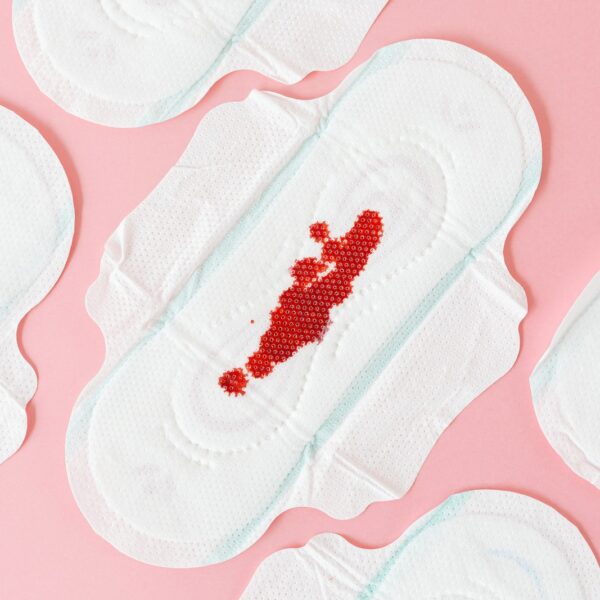The color, odor, and texture of discharge can give insight into women’s health. Discharge is normal and can change throughout the menstrual cycle.
During sexual arousal, the glands in the vagina secrete watery white discharge that helps lubricate during sex. This is healthy.
However, when the discharge changes texture and odor it could be a sign of infection. Here is a look at what causes this discharge and how to treat it.
Causes
A small amount of clear to milky white discharge from the vagina or penis is normal. This fluid is made by the body to clean and lubricate the vulva before, during, and after sexual activity. A person who has a vagina usually has about one teaspoon of this fluid a day. The fluid from the penis is called smegma, and it contains skin cells, oil, and other substances that keep the tip of the penile hydrated and lubricated. Normal smegma has no strong odor.
Discharge from the vagina and penis can change color and consistency throughout the menstrual cycle, depending on the time of the month and your health history. If the color or odor of your discharge changes, see your doctor. Changes in discharge may be a sign of an infection or another health problem.
If the white discharge is thick and clumpy, it could be a yeast infection. Yeast infections are caused by an overgrowth of Candida fungus in the vulva. Yeast infections can also occur without having sex. The symptoms of a yeast infection include itching and burning. Yeast infections often have a strong fishy odor.
Other causes of a white clumpy discharge after sex include bacterial vaginosis and certain sexually transmitted infections, including trichomoniasis, chlamydia, and gonorrhea. Practicing safe sex practices with condoms can help prevent these health problems.
Symptoms
The amount of white discharge can vary from person to person. However, if the discharge is heavy, smelly and/or painful, it may be a sign of an infection. If you experience these symptoms, it is important to contact your health care provider.
During sexual arousal, the vaginal glands produce clear to milky white discharge that helps lubricate the genitals for penetration. Men also have a similar fluid called smegma that forms behind the foreskin of an uncircumcised penis and contains skin cells, oils and liquids. Penile white discharge that is clumpy, cottage cheese-like or comes with a foul odor should be evaluated by a health care provider because it could indicate a bacterial or yeast infection or other serious problem.
Women whose white discharge is accompanied by painful urination or bleeding between periods should see a doctor for treatment. If the discharge is accompanied by red, swollen, itchy or tender sores on the skin near the vulva or anus, it is a sign of a yeast infection and should be treated with antifungal medications. Yeast infections can also be caused by certain sexually transmitted diseases, such as trichomoniasis or chlamydia. These STIs can be prevented by practicing safe sex and using condoms during all sex activities.
Treatment
While some changes in the color, smell or texture of discharge may be harmless, other changes can indicate a problem. Keeping track of what your normal discharge looks like and seeking medical advice for drastic changes in appearance can help you stay on top of your sexual health and avoid infection.
Vaginal and penile discharge during sexual activity is common, as it helps to lubricate the skin and provide an environment where sperm can safely pass through. However, if the white fluid becomes thicker and clumpy or has a foul smell, this could be an indication of an infection. In most cases, a doctor will recommend treatment for this condition.
Women with a healthy reproductive system typically have one teaspoon of clear to milky white discharge per day, with the most fluid produced during ovulation and during sexual activity. The amount of discharge varies throughout the menstrual cycle and can change due to pregnancy or birth control use.
Men who experience white clumpy discharge after sex should know that it is normal and not an indication of a sexually transmitted disease (STD). The discharge is called precum, and it is made up of natural materials from the body, including skin cells, oils and mucus. It helps to lubricate the genitals and prevent chafing during sex. The discharge also helps to maintain a moist environment in the anal canal and vulva.
Prevention
The color and consistency of vaginal discharge can change throughout the menstrual cycle, during pregnancy, and after sex. Usually, a white-grayish-colored discharge with an unpleasant cheesy or fishy odor isn’t healthy and signals bacterial vaginosis (BV). White clumpy discharge can also indicate a yeast infection or sexually transmitted infections such as chlamydia or gonorrhea. To prevent these infections, always use a condom for any unprotected sexual activity and regularly change pads, tampons, or menstrual cups. In addition, avoid scented feminine products and follow your doctor’s instructions for managing diabetes, which can increase your risk of yeast infections.
Thick white vaginal discharge is a normal part of the body’s natural lubrication process, and it can be especially thick during sexual arousal or when the body prepares for ovulation. It can also be caused by birth control pills, pregnancy, and certain health conditions such as diabetes.
Males can also experience thick white discharge. This is called ejaculate and is composed of semen, which can carry sperm that could fertilize an egg and cause pregnancy. It’s also common for men to secrete pre-ejaculate, which is a clear liquid that lubricates the penis in anticipation of sexual arousal. Pre-ejaculate can have a strong odor and may be accompanied by itching or pain. If you notice this, seek medical attention right away.




Leave a Comment